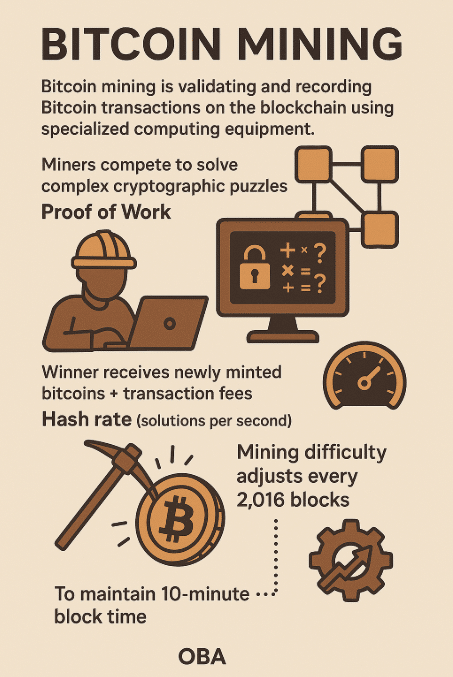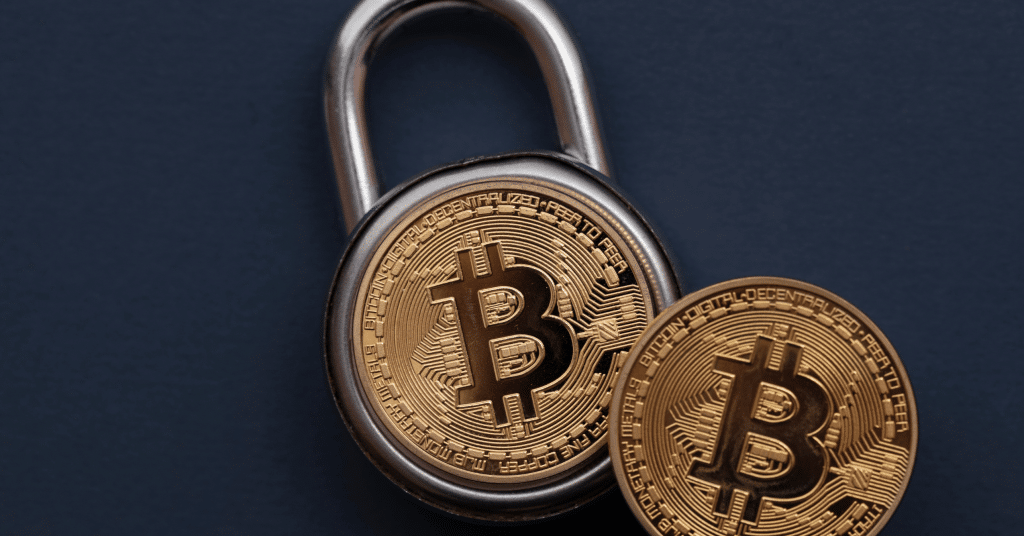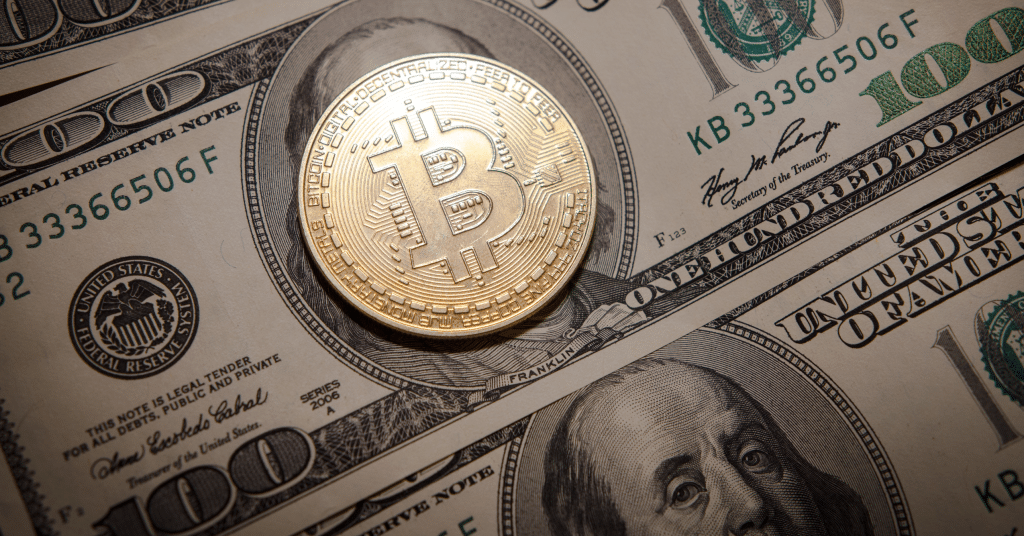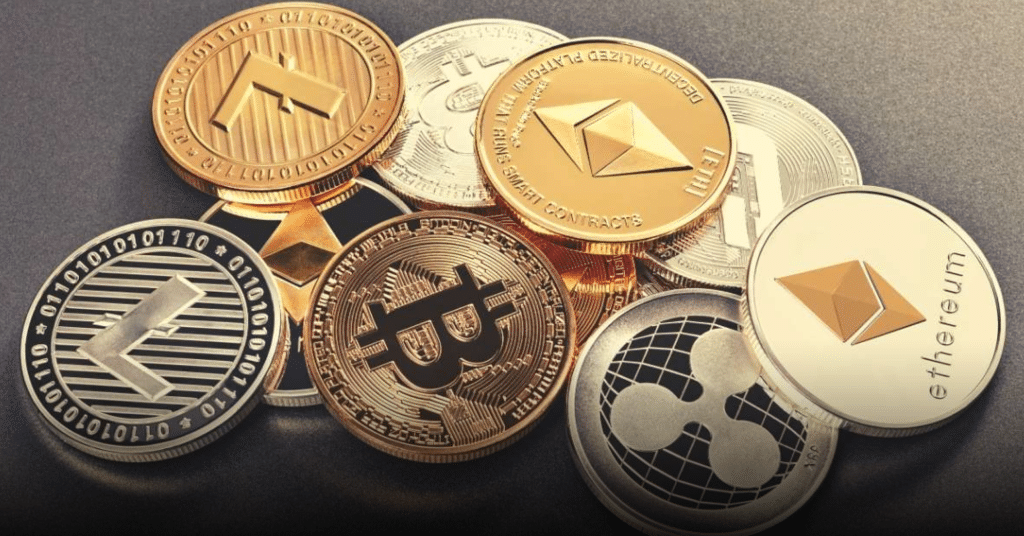Bitcoin mining has evolved dramatically since the early days when owners could mine thousands of BTC daily from their bedrooms.
As Bitcoin continues to be the leading cryptocurrency in 2025, many wonder if mining remains a viable path to profitability.
The latest halving, in April 2024, reduced block rewards to 3.125 BTC. Increased competition from industrial-scale operations and rising electricity costs have also changed the landscape significantly.
This article examines whether Bitcoin mining can still be profitable for individuals in today’s environment, what factors determine success, and realistic expectations for those considering entering the mining space.
Bitcoin Mining & Its Profitability: Key Takeaways
- Bitcoin mining profitability depends primarily on electricity costs, hardware efficiency, and Bitcoin’s market value.
- While industrial miners dominate the landscape, individuals can still profit through mining pools.
- Mining setup costs range from $2,000 to $20,000 for competitive equipment.
- Alternative cryptocurrencies may offer better entry points for new miners with limited resources.
What Is Bitcoin Mining?
Bitcoin mining is validating and recording Bitcoin transactions on the blockchain using specialized computing equipment.
It is how new transactions are verified and added to the Bitcoin blockchain. Think of it like a global competition where participants (miners) race to solve complex mathematical puzzles using specialized computers.
Miners compete to solve complex cryptographic puzzles, with the winner receiving newly minted bitcoins as a reward plus transaction fees.
This process, known as Proof of Work, requires significant computational power, measured in hash rate (solutions attempted per second).

Here’s how it works in simple terms:
- When someone sends Bitcoin to another person, this transaction joins a waiting area called the “mempool.”
- Miners pick up these pending transactions and try to package them into a “block.”
- To add this block to the blockchain, miners must solve a difficult
computational puzzle – similar to finding a needle in a digital haystack - The first miner to solve the puzzle gets to add the new block to the blockchain and receives newly created Bitcoin plus transaction fees as a reward.
For example, imagine thousands of accountants all trying to balance the same set of books simultaneously—the first one to complete the work correctly gets paid.
That’s essentially what Bitcoin miners do, but with powerful specialized computers called ASICs that can perform trillions of calculations per second.
Another way to think about it: miners are like digital security guards who verify transactions are legitimate before permanently recording them. They’re compensated for this important work that keeps the Bitcoin network secure and functional.
Note: The Bitcoin network automatically adjusts mining difficulty every 2,016 blocks (approximately every two weeks) to maintain a consistent block time of 10 minutes, regardless of how many miners join or leave the network.
This self-regulating system ensures network security while distributing rewards to those contributing computing resources.
What Determines Bitcoin Mining Profitability?
Several key factors influence whether your Bitcoin mining operation will turn a profit.
Hardware Efficiency
The efficiency of your mining equipment, measured in terahashes per second (TH/s) and watts per terahash, directly impacts profitability.
Modern ASIC miners like the Antminer S21 or Whatsminer M30S provide significantly higher hash rates than older models while consuming less electricity per unit of computational power.
Electricity Costs
Electricity represents the largest ongoing expense for miners. Operations with access to electricity rates under $0.05 per kWh have a substantial advantage.
In places where electricity costs $0.12 per kWh or higher, mining often becomes unprofitable regardless of the hardware used.
Bitcoin Price
The market value of Bitcoin dramatically affects mining profitability. Higher prices increase revenue without changing operational costs, meaning mining can swing from profitable to unprofitable as Bitcoin’s price fluctuates.
Mining Difficulty
As more miners join the network, the difficulty automatically increases, requiring more computational work to earn the same reward. This adjustment mechanism ensures blocks are found approximately every 10 minutes regardless of total network hashrate.
Pool Fees
Most miners join mining pools to receive more consistent rewards. These pools typically charge fees ranging from 1% to 4% of earnings. Different pools offer varying payout structures that can affect overall profitability.
Hardware Longevity
The durability of mining equipment affects long-term profitability. Higher-quality machines from manufacturers like MicroBT tend to have lower failure rates, reducing maintenance costs and downtime over the equipment’s lifespan.
Potential Challenges For Bitcoin Mining
Despite potential rewards, Bitcoin miners face numerous obstacles that can impact profitability.
High Energy Consumption
Bitcoin mining’s energy-intensive nature creates both financial and environmental challenges. With some operations consuming as much electricity as small countries, sustainability concerns and high utility bills remain significant obstacles.
Equipment Obsolescence
Mining hardware depreciates rapidly as newer, more efficient models enter the market. A top-tier ASIC miner typically remains competitive for only 1-2 years before its profitability declines significantly against newer machines.
Market Volatility
Bitcoin’s price fluctuations directly impact mining profitability. A sudden price drop can render previously profitable operations unprofitable, while price increases can extend the viability of older equipment.
Network Difficulty Increases
The Bitcoin network automatically adjusts difficulty as more hash power joins. This means that as more miners compete, individual rewards decrease proportionally, creating a constant race to maintain profitability.
Regulatory Uncertainty
Mining operations face evolving regulatory landscapes in different jurisdictions. Some countries have restricted or banned cryptocurrency mining, while others impose additional taxes or licensing requirements.
Heat Management
ASIC miners generate substantial heat, requiring effective cooling solutions. Inadequate cooling reduces hardware lifespan and increases failure rates, directly impacting profitability.
High Barrier to Entry
The days of profitable mining with consumer-grade hardware are long gone. The significant upfront investment required creates a high barrier to entry for new miners without substantial capital.
How Much Does Bitcoin Mining Cost?
| Cost Category | Details |
|---|---|
| Initial Hardware | $1,320 – $14,000+ for modern ASIC miners like Antminer S21 XP (473 TH/s) or Whatsminer M30S (412 TH/s) |
| Monthly Electricity | $100+ per machine at low industrial rates ($0.045/kWh); much higher at residential rates |
| Cooling Systems | Additional costs for fans, ventilation, or specialized cooling solutions |
| Maintenance | Regular upkeep and potential repairs for hardware |
| Facility Modifications | Potential electrical upgrades and heat management solutions |
| Mining Pool Fees | 2-4% of mining rewards |
| Total Setup (Home Miner) | $5,000+ initial investment |
| Monthly Operations | $150-300 per machine for home miners in developed countries |
Starting a Bitcoin mining operation requires significant initial investment. Current-generation ASIC miners range from $1,320 to over $14,000 for high-performance models like the Antminer S21 XP (473 TH/s) or Whatsminer M30S (412 TH/s).
Beyond hardware costs, miners must consider electricity consumption, which can exceed $100 monthly per machine at rates of $0.045/kWh.
Additional expenses include cooling systems to prevent overheating, maintenance costs, and potential facility modifications to handle power requirements and heat dissipation. Mining pool fees typically add another 2-4% to operational costs.
Home miners in developed countries often have a total setup cost that exceeds $5,000, with monthly operational expenses between $150-300 per machine, depending on local electricity rates.
How Much Can You Earn by Bitcoin Mining?
Bitcoin miners earn through two primary revenue streams:
- Block rewards.
- Transaction fees.
As of 2025, each successfully mined block awards 3.125 BTC (approximately $262,000 at $84,000 per Bitcoin) plus transaction fees averaging 0.1-0.3 BTC per block.
For individual miners joining pools, earnings are proportional to contributed hashrate. A modern ASIC miner like the Antminer S21 XP (473 TH/s) might generate $15-25 daily at current difficulty and price levels before electricity costs.
Miners with electricity costs of $ 0.05/kWh net $8-15 daily per machine, while those paying $0.10/kWh or more struggle to break even.
Scaling operations with multiple machines and access to low-cost electricity remain essential for meaningful profits. Professional operations generate thousands of dollars daily through economies of scale.
How To Maximize Bitcoin Mining?
To maximize Bitcoin mining profitability, securing low-cost electricity is paramount—ideally below $0.05/kWh through industrial rates, renewable energy solutions, or locations with naturally low energy costs.
Invest in the latest, most efficient ASIC hardware with high hash rates and low power consumption ratios.
Rather than mining solo, join established mining pools like F2Pool or Slush Pool to ensure steady, predictable income proportional to your contribution.
Implement proper cooling and maintenance routines to extend equipment lifespan and maintain optimal performance.
Consider geographic diversification to capitalize on regional advantages such as cooler climates (reducing cooling costs) or favorable regulatory environments. Some miners improve economics by repurposing generated heat for warming buildings or agricultural projects.
Real-World Examples of Heat Repurposing
- Residential/Commercial Heating:
- Sweden/Norway: Miners like Genesis Mining and Hive Blockchain partner with district heating systems to supply warm water to towns.
- Canada: Mining firm Heatmine uses ASICs to heat greenhouses and farms.
- Industrial/Agricultural Uses:
- Greenhouses: Excess heat maintains optimal temperatures for crops.
- Aquaculture: Miners heat water for fish farms.
Finally, strategically timing hardware purchases and upgrades to coincide with favorable market conditions can significantly improve the overall return on investment.
Also Read:
Final Verdict: Bitcoin Mining Can Be Profitable When Operated At Scale
Bitcoin mining can still be profitable in 2025, but success requires industrial advantages: electricity costs under $0.05/kWh, latest-generation ASICs, and efficient operations.
Home miners with average electricity costs will struggle without exceptional circumstances like free power. The most successful operations run at scale with dozens or hundreds of machines.
Before starting, conduct a thorough cost-benefit analysis calculating your break-even timeline.
For most newcomers, alternative ASIC-resistant cryptocurrencies offer better entry points, or simply buying Bitcoin directly may provide better returns. If you pursue mining, start small and scale gradually as you verify profitability.




